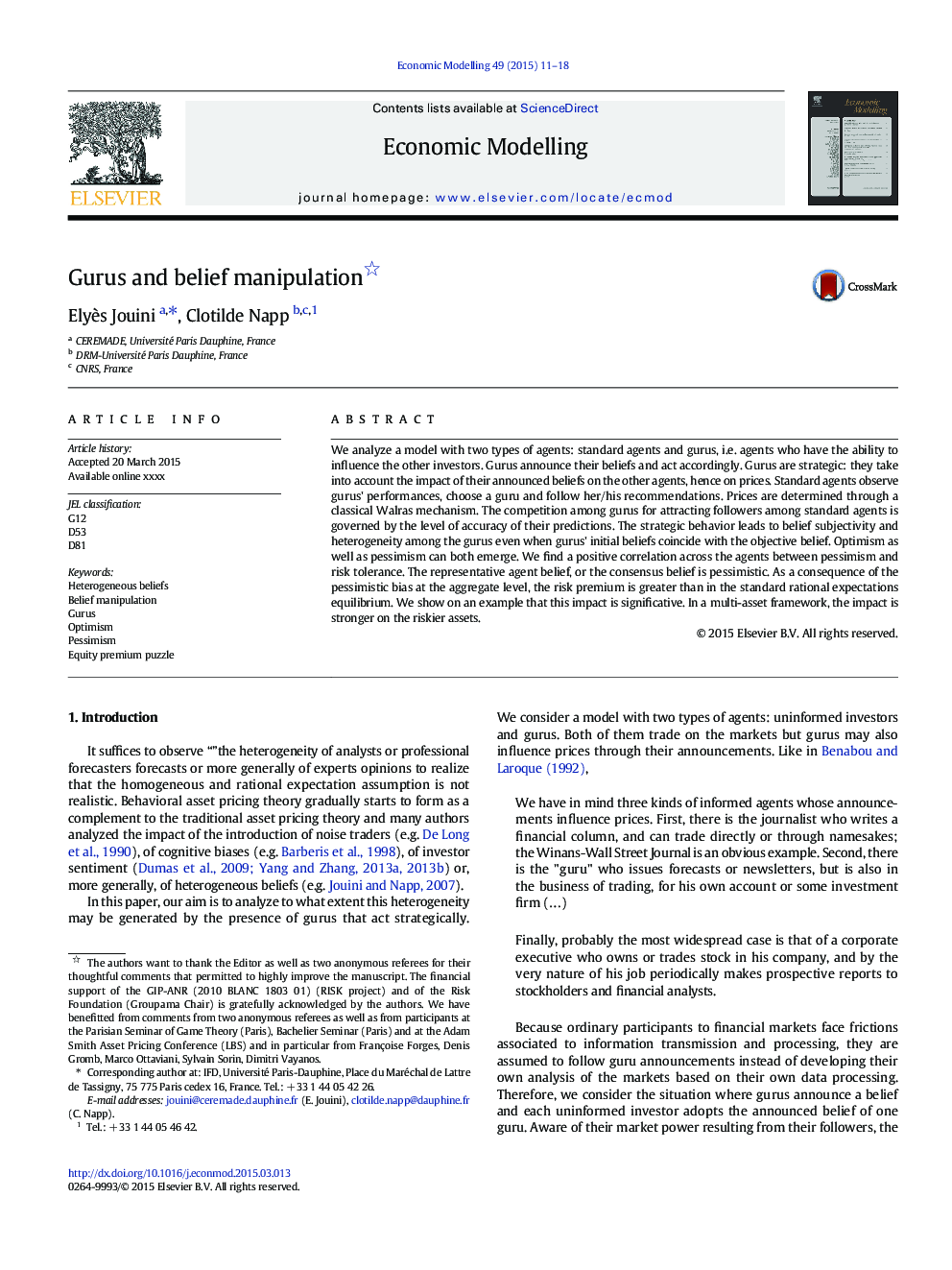| Article ID | Journal | Published Year | Pages | File Type |
|---|---|---|---|---|
| 5053807 | Economic Modelling | 2015 | 8 Pages |
Abstract
We analyze a model with two types of agents: standard agents and gurus, i.e. agents who have the ability to influence the other investors. Gurus announce their beliefs and act accordingly. Gurus are strategic: they take into account the impact of their announced beliefs on the other agents, hence on prices. Standard agents observe gurus' performances, choose a guru and follow her/his recommendations. Prices are determined through a classical Walras mechanism. The competition among gurus for attracting followers among standard agents is governed by the level of accuracy of their predictions. The strategic behavior leads to belief subjectivity and heterogeneity among the gurus even when gurus' initial beliefs coincide with the objective belief. Optimism as well as pessimism can both emerge. We find a positive correlation across the agents between pessimism and risk tolerance. The representative agent belief, or the consensus belief is pessimistic. As a consequence of the pessimistic bias at the aggregate level, the risk premium is greater than in the standard rational expectations equilibrium. We show on an example that this impact is significative. In a multi-asset framework, the impact is stronger on the riskier assets.
Related Topics
Social Sciences and Humanities
Economics, Econometrics and Finance
Economics and Econometrics
Authors
Elyès Jouini, Clotilde Napp,
